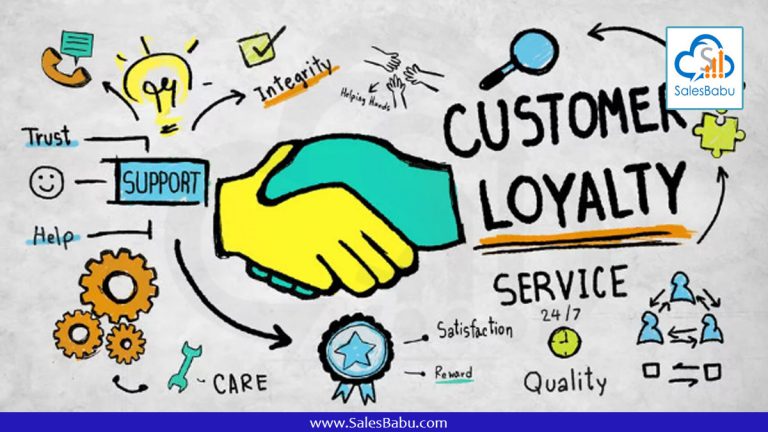Every business wants loyal customers, but it’s earned through a well-crafted experience that meets customer needs at every turn. To keep clients coming back, businesses must understand the “customer journey”—all the steps a customer goes through, from the very first phase of awareness to purchase and beyond.
Mapping the entire journey helps customer service agents understand customer behaviour pain points, creating a seamless experience that encourages long-term loyalty.
The Importance of Mapping the Customer Journey
Mapping the customer journey is like creating a roadmap for understanding how customers interact with a brand. Every touchpoint matters, whether it’s a social media ad, an email or a conversation with a service representative. Each interaction can be a chance to impress—or frustrate—a potential customer. By studying the customer journey, businesses can identify areas where things may go wrong, understand the demands of their customers and make improvements where necessary.
Why is this so important for client retention? Because today’s customers expect more. They want quick responses, personalised experiences and smooth interactions across all channels. If they don’t get what they’re looking for, they won’t hesitate to switch to a competitor. Businesses that take the time to map and understand their customer journey can ensure they’re meeting these high expectations and retaining clients.
Identifying Key Stages in the Customer Journey
The customer journey typically follows a few key stages, each with unique opportunities and challenges. Understanding these stages allows businesses to create targeted strategies that resonate with customers’ needs at each point. Here’s a closer look:
- Awareness: The process begins when a potential customer first hears about the brand. This could happen through an ad, word of mouth or a social media post. It’s all about making a positive first impression that sparks curiosity and interest.
- Consideration: At this stage, the customer is evaluating their options. They’re researching different brands, comparing prices and looking at reviews. This is a crucial stage where clear, accessible information and value propositions can make all the difference.
- Purchase: The customer has decided upon making a purchase. A smooth transaction process, responsive customer service and a friendly interface all contribute to a positive buying experience. Any friction here, like a complicated checkout process, could lead to cart abandonment.
- Post-Purchase: The journey doesn’t end with a purchase. After-sales support, follow-up emails and opportunities for feedback are essential for ensuring customers feel valued and supported.
- Loyalty and Advocacy: Satisfied customers become loyal customers and loyal customers can turn into advocates. They’ll recommend the brand to friends and family and this will attract new customers.
Pinpointing Pain Points and Opportunities for Engagement
Pain points are those moments of frustration or confusion that can crop up at any stage. Identifying these pain points early on is critical for enhancing customer experience and driving retention.
For instance, if customers frequently abandon their carts, there may be an issue with the checkout process. Maybe it’s too long, the payment options are limited, or there’s no visible return policy. By digging into these details, businesses can pinpoint exactly where customers are getting stuck.
Each stage also brings opportunities to engage and delight customers. During the consideration phase, brands can offer personalised recommendations or comparison guides that make the decision-making process more manageable. In the post-purchase phase, something as simple as a thank-you email or a discount on their next purchase can leave a lasting positive impression. Mapping out these opportunities for engagement means the brand isn’t just reacting to customer needs but proactively meeting them.
Enhancing the Customer Experience
Improving the customer experience involves understanding what customers are going through, gathering data and using it to make informed decisions. Tools like surveys, customer feedback and data analytics offer valuable insights into what’s working and what isn’t.
For example, businesses can use feedback to identify common complaints and then take actionable steps to resolve these issues. If several customers report difficulty navigating a website, it may be time for a redesign. If customers mention that response times are slow, investing in online customer service training for the team can address this gap.
By tailoring interactions to individual customers, businesses can make them feel valued and understood. Online customer service training will help customer service agents learn the importance of excellent customer service and their role in delivering it. They’ll learn how to interact with clients, resolve complaints and provide service levels that keep customers coming back.
Training programmes are available on online health and safety platforms, making it convenient and flexible for workers to take their time and learn effectively.
Developing Communication Skills to Drive Loyalty
Good communication is the backbone of a strong customer relationship. Businesses that excel in customer communication create trust, resolve issues more effectively and drive brand loyalty. Tone, empathy and clarity all play significant roles in whether a customer leaves satisfied or frustrated.
Investing in communication skill courses for employees can help improve these interactions. For instance, training in active listening can teach customer service reps to understand customers’ real needs instead of just responding to surface-level complaints. Courses that emphasise empathy can also help employees see situations from the customer’s perspective, allowing them to provide more thoughtful and personalised responses.
Good communication extends beyond customer service departments, too. Marketing messages, social media interactions and even automated emails should feel genuine and helpful. A customer who feels genuinely heard is more likely to stay loyal to a brand in the long term.
The Takeaway
The customer journey is not a set-and-forget process. As customer expectations evolve, so must the journey map. Businesses should constantly seek ways to improve, whether it’s by responding to feedback, adjusting processes or experimenting with new engagement strategies.
By mapping the journey, pinpointing pain points, enhancing the customer experience and developing communication skills, businesses can create a customer experience that keeps clients coming back again and again. It’s a process, but with continuous effort, the rewards are undeniable: happier customers, increased loyalty and a thriving brand.
